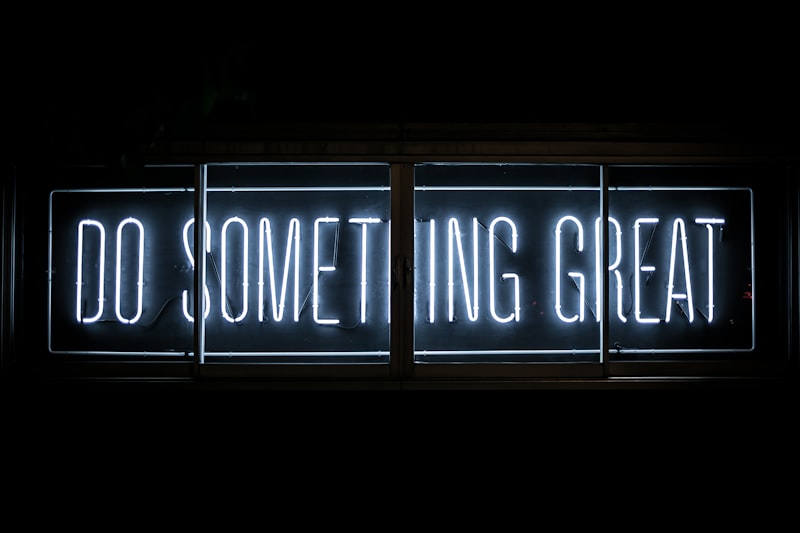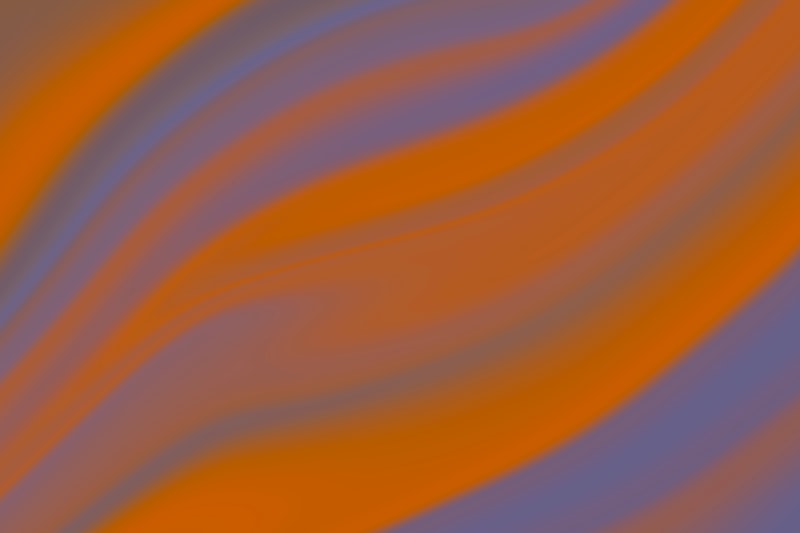The Dark Web is a hidden part of the internet that isn’t indexed by traditional search engines like Google or Bing. It exists on encrypted networks that require specific software, configurations, or authorization to access. This secrecy has given rise to its reputation as a haven for illicit activities.
Picture it as an iceberg: what you see above the waterline is just a fraction of what exists beneath. On the surface web, we navigate through websites and services that are easily accessible. However, below that surface lies the Deep Web, which includes content not indexed by standard search engines, such as private databases or academic journals. Deeper still is the Dark Web, a small yet notorious portion of the Deep Web known for its anonymous marketplaces, forums, and communities.
So, what exactly goes on in this clandestine corner of cyberspace? Well, the Dark Web is infamous for being a marketplace for illegal goods and services. You can find anything from drugs, weapons, counterfeit currency, and stolen data to hacking tools and malicious software. It’s like stumbling upon a digital black market where anonymity is both a shield and a weapon.
But it’s not all doom and gloom. The Dark Web also serves as a refuge for those seeking privacy and free speech in countries with oppressive regimes. Whistleblowers, journalists, and activists may use it to communicate securely, away from prying eyes and censorship.
Navigating this hidden realm requires caution and a good deal of tech-savviness. Users often employ anonymity tools like Tor (The Onion Router) to mask their identities and access Dark Web sites. However, it’s essential to tread carefully, as the Dark Web is also home to scams and traps set by cybercriminals.
Intrigued yet? The Dark Web is a murky underworld that continues to fascinate and intrigue cybersecurity experts, law enforcement agencies, and curious individuals alike. It’s a digital wild west where the rules of the surface web don’t apply and where every click could lead to a discovery or a danger.
Unveiling the Shadows: Journey into the Enigmatic Dark Web
Imagine a digital labyrinth where anonymity reigns supreme and users navigate through layers of encrypted networks. It’s akin to exploring a hidden marketplace in a bustling city, where unconventional goods and services are traded beyond the gaze of mainstream scrutiny.
The Dark Web serves various purposes for its users, ranging from privacy-seeking individuals to activists and even criminals. It’s a place where one can find forums for uncensored discussions, whistleblowing platforms, and marketplaces for illicit goods. However, amidst these shadows, ethical debates persist about its role in facilitating illegal transactions and activities.
Navigating this clandestine realm requires caution and an understanding of its risks. While anonymity can protect privacy, it also harbors dangers such as scams, malware, and exposure to explicit content. It’s a digital frontier where cybersecurity and personal safety are paramount concerns.
For those curious about this digital underworld, exploring the Dark Web offers a glimpse into a parallel internet ecosystem unlike the surface web we commonly traverse. It challenges perceptions of internet freedom and raises questions about the balance between privacy and security in the digital age.
The Dark Web remains a complex and multifaceted phenomenon, evoking both fascination and apprehension. It underscores the dual nature of technology — capable of empowering individuals while also presenting unforeseen risks. As the digital landscape evolves, understanding such hidden corners becomes crucial in navigating the complexities of our interconnected world.
Behind the Curtain: Decrypting the Secrets of the Dark Web
At its core, the Dark Web is a subset of the Deep Web, which encompasses all web pages that are not indexed by standard search engines. It’s where users can engage in activities away from the prying eyes of law enforcement and governments. Think of it as a digital underground marketplace where anonymity reigns supreme.
One of the most common misconceptions about the Dark Web is that it’s solely a hub for illegal activities. While it’s true that illicit goods and services are exchanged here, ranging from drugs and weapons to stolen data and hacking tools, not everything on the Dark Web is nefarious. It also serves as a refuge for journalists, activists, and individuals living under oppressive regimes who seek to communicate securely and freely.
Navigating the Dark Web requires specialized software like Tor (The Onion Router), which anonymizes users’ internet traffic by routing it through a series of encrypted nodes. This technology, originally developed by the U.S. Navy, enables users to access .onion websites, the hidden domains of the Dark Web.
Security is paramount on the Dark Web, where trust is built through reputation and encrypted communication channels. Transactions often use cryptocurrencies like Bitcoin to ensure anonymity and prevent tracing back financial transactions.
Law enforcement agencies worldwide monitor the Dark Web to combat illegal activities, often conducting undercover operations to identify and apprehend criminals. Despite these efforts, the dynamic and decentralized nature of the Dark Web presents ongoing challenges in enforcement and regulation.
While the Dark Web remains a mysterious and controversial part of the internet, it serves various purposes beyond illegal activities. Understanding its complexities requires a nuanced approach, balancing concerns over security and privacy with legitimate uses for anonymity and free expression.
Navigating the Unknown: Adventures in the Depths of the Dark Web

The Dark Web, often shrouded in mystery and intrigue, represents a hidden realm of the internet that goes beyond the surface-level sites indexed by standard search engines. Imagine it as the deep sea of cyberspace, where anonymity reigns supreme and conventional rules of browsing no longer apply. This clandestine corner of the internet isn’t inherently nefarious but rather offers a cloak of privacy that attracts both legitimate privacy seekers and illicit activities alike.

In essence, accessing the Dark Web requires specialized tools like Tor (The Onion Router) that anonymize your identity by routing internet traffic through multiple layers of encryption. It’s akin to exploring a digital underground, where users can engage in activities ranging from anonymous communication and whistleblowing to more illicit transactions involving contraband, hacking tools, and even black market goods and services.
But amidst its shadows lie cautionary tales. The Dark Web, like any uncharted territory, harbors risks. It’s a place where cybercriminals lurk, and navigating its pathways can expose users to scams, malware, and law enforcement surveillance. Despite its risks, the allure of untraceable communication and the exchange of sensitive information continues to draw curiosity-seekers and privacy advocates.
For those curious enough to venture, understanding the Dark Web requires a blend of caution and technical savvy. It’s not a place for casual browsing but rather a realm where every click could lead to the unexpected. As with any adventure into the unknown, preparation and awareness are key. Users must tread carefully, armed with knowledge of digital security practices and an understanding of the potential consequences.
The Dark Web remains a fascinating yet enigmatic part of the internet’s landscape. Its exploration offers a glimpse into the complexities of online anonymity and the divergent motivations of its users. Whether viewed as a digital frontier or a cautionary tale, navigating its depths requires both a sense of adventure and a respect for its inherent risks.
Cracking the Code: Revealing the Hidden Treasures of the Dark Web
Have you ever wondered what lies beneath the surface of the internet, beyond the familiar websites we use every day? Enter the Dark Web, a mysterious realm notorious for its secrecy and intrigue. Often portrayed in media as a hub for illicit activities, the Dark Web is also a treasure trove of information and resources that defy conventional access.
Unlike the Surface Web, which is indexed and accessible through standard search engines like Google, the Dark Web operates on encrypted networks that require specific software, configurations, or permissions to access. It’s a digital wilderness where anonymity reigns supreme, fostering both legitimate anonymity-seeking users and those with more nefarious intentions.
Within this obscured corner of the internet, you’ll find a marketplace of ideas and goods that challenge traditional norms. Cryptocurrencies like Bitcoin are the currency of choice, ensuring transactions are nearly untraceable. This anonymity has given rise to a unique economy where everything from legal services to illegal substances can be bought and sold under the radar.
Navigating the Dark Web is akin to exploring a labyrinthine marketplace where users must tread carefully. Forums and communities exist for diverse interests, from privacy advocates and whistleblowers to hackers and researchers pushing the boundaries of technology and ethics.
But with its allure also comes significant risks. Law enforcement agencies worldwide monitor the Dark Web for criminal activities, leading to high-profile crackdowns on black markets and illegal operations. Yet, for many, the appeal of uncensored communication and access to restricted information remains a powerful draw.
In essence, the Dark Web is a double-edged sword, offering unparalleled privacy and freedom alongside considerable dangers. It challenges our understanding of the internet’s capabilities and raises important questions about digital privacy and security in today’s interconnected world.
As we delve deeper into the complexities of the Dark Web, one thing is certain: it continues to captivate and confound, offering both hidden treasures and unforeseen perils to those who dare to explore its depths.
Intrigue and Intricacy: Delving Deep into Dark Web Enigmas
Exploring the depths of the internet unveils a realm shrouded in mystery: the Dark Web. Unlike the familiar corners of the web we navigate daily, this obscure part operates on anonymity and encryption, forming a clandestine network of intrigue and intricacy.
Imagine the Dark Web as an unseen alleyway in a bustling city, accessible only to those who know how to find its hidden entrances. It’s not indexed by traditional search engines, making it a haven for activities that thrive in obscurity. From illicit marketplaces trading in drugs, weapons, and stolen data to forums discussing sensitive topics under the cloak of anonymity, the Dark Web is a digital underworld with its own rules.

What makes the Dark Web so enigmatic is its dual nature: a hub for criminal activities yet also a refuge for privacy advocates and whistleblowers navigating oppressive regimes. It’s a paradoxical space where anonymity can shield both good and bad intentions.
Navigating this labyrinth requires specialized tools and know-how, emphasizing security and discretion. Tor, short for The Onion Router, is one such tool, designed to anonymize users by routing their internet traffic through a series of encrypted relays. This layered approach resembles peeling back the layers of an onion, hence its name.
However, the Dark Web isn’t merely a realm of illicit transactions. It has also been a catalyst for discussions on cybersecurity, privacy rights, and the ethical implications of online anonymity. Researchers, law enforcement agencies, and cybersecurity experts monitor its activities closely, aiming to understand its dynamics and combat criminal behaviors.
In essence, the Dark Web remains a paradoxical phenomenon, offering both a glimpse into the hidden underbelly of the internet and posing profound questions about digital ethics and security in our interconnected world.
Digital Shadows: Unraveling the Dark Web’s Cryptic Labyrinth
Ever wondered what lurks in the depths of the internet beyond the familiar sites we use every day? Welcome to the enigmatic realm of Digital Shadows, where the Dark Web unveils its mysterious labyrinth. This digital underworld is not just a figment of Hollywood imagination but a complex network where anonymity and secrecy reign supreme.
Imagine a virtual maze where conventional search engines fear to tread. The Dark Web operates on encrypted networks that conceal identities and activities, making it a haven for various clandestine dealings. From illegal marketplaces to forums discussing anything from cybersecurity vulnerabilities to political dissent, it hosts a spectrum of activities often shielded from public view.
Navigating this cryptic labyrinth requires more than just a web browser; it demands specialized tools and a keen understanding of its intricacies. Unlike the Surface Web, which most of us interact with daily, the Dark Web necessitates anonymized browsers like Tor and specific configurations to access its hidden services.
But why the allure? For some, it’s about evading surveillance or censorship, safeguarding privacy in an increasingly monitored digital landscape. For others, unfortunately, it’s a hub for illicit trades—drugs, weapons, stolen data, you name it. Understanding Digital Shadows involves peeling back layers of anonymity to reveal both its potential for privacy protection and its darker implications.
Moreover, Digital Shadows aren’t just a passive concept—they actively shape discussions around cybersecurity and law enforcement strategies. Professionals delve into its depths to preempt cyber threats, monitor criminal activities, and safeguard vulnerable systems from exploitation.
In essence, the Dark Web’s Digital Shadows epitomize the duality of technology—a tool that can empower and protect while also harboring risks and illicit activities. Navigating this digital underworld is akin to exploring a labyrinthine cave, where each turn reveals new complexities and surprises, challenging perceptions of the internet’s boundaries.

Ready to delve deeper into the digital unknown? Join us as we uncover Digital Shadows and demystify the cryptic world of the Dark Web.
Beneath the Surface: Unmasking the Dark Web’s Veiled Phenomena
Have you ever wondered what lies beyond the familiar layers of the internet? The Dark Web, often shrouded in mystery and intrigue, unveils a realm where anonymity and secrecy prevail. Unlike the surface web accessible through regular search engines, the Dark Web operates on encrypted networks, hidden from standard browsers.
Imagine it as a digital underground marketplace bustling with activities beyond the conventional eye. Here, users can find everything from illicit goods and services to forums discussing topics ranging from privacy to cybersecurity. It’s a world where identities are masked, transactions are anonymous, and information flows discreetly.
Navigating the Dark Web requires specialized tools like Tor (The Onion Router), which anonymizes internet traffic by routing it through multiple nodes, making it difficult to trace back to the user. This anonymity attracts various users, including journalists protecting sources, activists evading censorship, and unfortunately, individuals engaged in illegal activities.
The veil of the Dark Web also hides legitimate uses, such as whistleblowing platforms and forums for oppressed groups to communicate securely. Yet, it’s crucial to navigate this realm cautiously, as it harbors risks of encountering scams, malware, and other malicious entities lurking in its shadows.
In essence, the Dark Web represents a dual-edged sword—a place where privacy and freedom coexist with danger and illicit activities. It challenges conventional norms of internet usage, raising ethical and legal concerns globally. Exploring its depths reveals a complex ecosystem where anonymity empowers but also conceals potential threats.
Understanding the Dark Web goes beyond mere curiosity; it requires awareness of its implications and responsibilities. It prompts us to question the balance between privacy rights and cybersecurity measures in an increasingly digital world. As we delve deeper into this enigmatic realm, we uncover both its potential for good and its darker underbelly.
Frequently Asked Questions
What are the potential risks of exploring the Dark Web, and how can they be mitigated?
Understand the risks associated with exploring the Dark Web, such as encountering illegal activities, malware, and privacy breaches. Mitigate these risks by using reputable security software, avoiding illegal activities, and never sharing personal information.
What are some common myths and misconceptions about the Dark Web?
Discover the truth behind common myths and misconceptions about the Dark Web with this concise FAQ. Get clear insights into what the Dark Web really entails and dispel misinformation effectively.
Is it legal to browse the Dark Web?
Yes, it is legal to browse the Dark Web. However, accessing certain illegal content or engaging in illegal activities on the Dark Web is against the law.
How can I access the Dark Web safely and anonymously?
Learn how to access the Dark Web safely and anonymously with essential tips on using Tor Browser, configuring security settings, and maintaining privacy practices. Discover steps to avoid potential risks and protect your identity while exploring hidden services and content.
What is the Dark Web and how is it different from the Deep Web?
Discover the distinctions between the Dark Web and the Deep Web. Learn about their unique characteristics and understand why they are often confused but fundamentally different. Gain clarity on where legitimate activities occur and where illicit activities typically take place.


